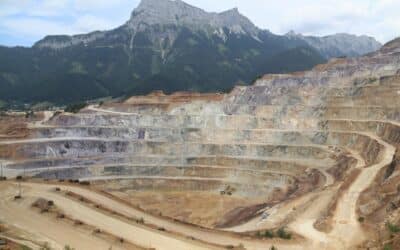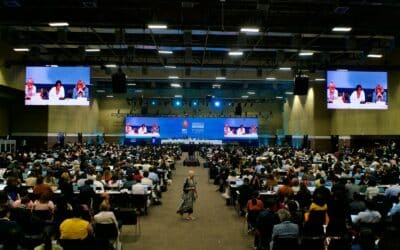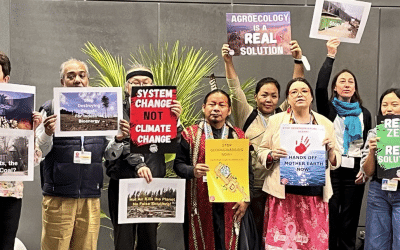Environment Canada investigating after iron-rich dust dumped off coast
Fifth Estate (CBC)
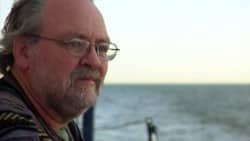
U.S. businessman Russ George, chief scientist and CEO for the HSRC, has been a proponent of the controversial idea of iron fertilization for years. (CBC/HSRC)
Environment Canada’s enforcement branch has executed search warrants in British Columbia as part of an investigation into a controversial iron-fertilization experiment that took place off the coast of Haida Gwaii, B.C., last summer, CBC’s the fifth estate has learned.
In July 2012, the Haida village of Old Massett and an American businessman dumped 100 tonnes of iron-rich dust into the ocean off Haida Gwaii, sparking international controversy.
In an exclusive interview, Ken Rea, chief councillor of the village, told the fifth estate’s Gillian Findlay that despite two UN resolutions banning iron fertilization and anti-dumping legislation in Canada he would like to do it again and make it sustainable
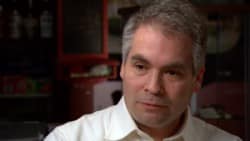
Ken Rea, chief councillor of the village of Old Massett in Haida Gwaii, says that he would like to bring iron fertilization back to Canada and make it sustainable, despite anti-dumping legislation. (CBC)
“After all the uproar, based on a whole bunch of inflammatory mischaracterized words, after calling it illegal, calling it dumping, calling it rogue and not having any of the evidence to back up their statements, none of it, they had no evidence to back all these statements up, we have it,” Rea says in an interview that airs on the fifth estate Friday at 9 p.m. and 9:30 p.m. in N.L.
Old Massett residents invested $2.5 million to start the Haida Salmon Restoration Corporation (HSRC) and initiate the iron-fertilization project in hopes that it would boost the salmon population.
U.S. businessman Russ George, the chief scientist and CEO for the HSRC, has been a proponent of the controversial idea of iron fertilization for years.
Scientists say iron promotes the growth of plankton, microscopic organisms that provide a food source for salmon and other sea life. George based the experiment on the theory that growing artificial plankton blooms can remove carbon from the atmosphere and help reduce global warming.
Plankton absorb carbon dioxide from the sea and the air; the theory is that when plankton die they take carbon to the bottom of the ocean. Countries or companies that produce a lot of carbon could then buy carbon credits from the company that created the artificial plankton bloom.
There have been more than a dozen studies on iron fertilization in oceans with varying results, but there is no conclusive evidence plankton can remove substantial amounts of carbon from the environment in the long-term.
Some scientists say putting iron in the ocean is dangerous, because it could create “dead zones” where nothing can live. John Cullen, a professor of oceanography at Dalhousie University in Halifax, says unregulated experiments, such as the one off the coast of Haida Gwaii, should not be allowed.
“If those consequences cannot be predicted with confidence and verified with measurements then the activity should not be permitted,” he said.
George first gained media attention when he tried to do an iron-fertilization project off the Galapagos Islands in 2007. His company, Planktos Inc., attempted to dump 100 tonnes of iron-rich dirt near the World Heritage site before he was stopped by governments and environmentalists.
Jim Thomas, of the environmental action organization the ETC Group, says a UN moratorium on iron fertilization was passed with George in mind.
“It was prompted by what Russ George was planning to do, so we then had two international moratoria in place. And since then there has actually been even further agreements through other bodies,” Thomas told the fifth estate.
Old Massett residents said three meetings were held in 2011 before the community voted to approve the project. April White, a local artist and geologist, told the fifth estate the project was pitched by the village’s economic development officer, John Disney.
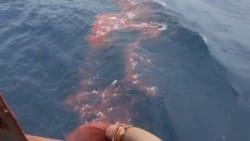
Iron fertilization involves dumping iron-rich soil into the ocean. Scientists say iron-rich dirt promotes the growth of plankton, microscopic organisms that provide a food source for salmon and other sealife. (CBC/HSRC)
“He said this project would bring in so much money. Everybody would have jobs because he had customers already lined up to buy the carbon credits from rich industries in Europe,” White said.
There is currently no regulated market for carbon credits based on fertilizing the ocean. Since there is no proof that plankton actually removes carbon in any significant way, there is no market.
White says Old Massett residents were also told the project would bring back salmon. That convinced them to vote in favour of the project, she said.
“Salmon is very much a part of the culture — I like to say we’re salmon people. It’s what connects us to nature. For the salmon not to come back in the same numbers is a real trauma. It really is a heartfelt thing.”
According to Rea, the salmon have all but disappeared and the loss has hit his fishing community hard. He said unemployment in Old Massett is about 70 per cent.
George declined to speak with the fifth estate. The HSRC website says that through this project the company is “working to learn how to replenish and restore the ocean plankton blooms, the ocean pastures, and salmon.”
The iron-fertilization experiment has split the Haida nation.
Residents of Skidegate First Nation, a Haida community 100 kilometres south of Old Massett, told the fifth estate they believe their reputation as stewards of the environment has been tarnished by what the village of Old Massett has done.
In an email to the fifth estate, Environment Canada said ocean fertilization is not allowed under Canadian law unless it qualifies as legitimate scientific research. Environment Canada says it did not receive an application from the village of Old Massett and is still investigating.
